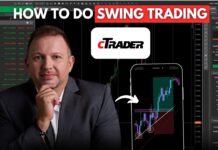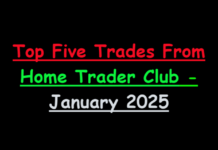
What is Forex Trading?
Forex trading, also known as foreign exchange trading, is the buying and selling of currencies to profit from the changes in their exchange rates (The exchange rate of a currency pair determines the value of one currency relative to another). Forex traders aim to profit from changes in exchange rates by buying low and selling high or selling high and buying low. It is a highly popular market with an average daily trading volume of over $5 trillion, making it the world’s largest and most liquid financial market. The market is decentralized, meaning it does not have a physical location, and transactions occur electronically.
However, for beginners, the world of Forex trading can be intimidating and confusing. This article aims to provide a complete guide to Forex trading, covering everything from the basics to advanced strategies. While it can initially seem daunting, understanding the basics of forex trading is essential for anyone who wants to make informed investments in this market. In this article, we’ll walk you through the fundamentals of forex trading, including its mechanics, the major players involved, and how to manage risk to succeed in Forex Trading.
I invite you to join our trading family (Home Trader Club) and enjoy our REAL-TIME trading opportunities and REAL-TIME trading education.
Explore My Free Mentorship Program
As an Internationally Certified Financial Technician (CFTe, IFTA) and former private capital hedge fund trader, I have successfully mentored numerous students who are now thriving in the trading world. Students who learned with me, are now full-time traders, work in the trading industry, run their own capital firms or are fully funded traders by private companies, develop automated trading solutions and manage others’ capitals. I am a very proud mentor and I am proud of the success stories I’ve helped create, and for a limited time, I’m offering my mentorship program for free through a partnership with Eight Cap broker. Join Eight Cap, become an active trader, and choose the offer that suits you best –
For more details, visit: Home Trader Club Mentorship Program
I’m excited to work with you and help you reach your desired level of success!
The Basics of Forex Trading
To start trading in the Forex market, you must understand some basic concepts and terms. Here are some of the most important:
Currency pairs: A currency pair is a pair of currencies that are traded in the foreign exchange (forex) market. In forex trading, currencies are always traded in pairs because you sell another when you buy one currency. The two currencies in a currency pair are represented by a three-letter code, with the first two letters representing the country and the third letter representing the currency.
For example, the EUR/USD currency pair represents the Euro and the US dollar, with the EUR being the base currency and the USD being the quote currency. The USDJPY pair represents the US Dollar and the Japanese Yen; Similarly, the GBPUSD pair represents the British Pound and the US Dollar.
The exchange rate of a currency pair represents the amount of quote currency needed to purchase one unit of the base currency. Most of the currency pairs are quoted using five decimal places, with the fifth decimal place representing a fraction of a pip.
You can learn in-depth about this and much more here
Pip: A pip, short for “percentage in point” or “price interest point”, is a unit of measurement in forex trading that represents the smallest change in the price of a currency pair. In most currency pairs, a pip represents the fourth decimal place of the exchange rate. For example, if the GBP/USD pair moves from 1.1000 to 1.1001, it has moved one pip higher.
Leverage: Leverage is a tool traders use to increase their position size beyond what they would have been able to with their own funds. Leverage is expressed as a ratio, such as 100:1, which means that for every $1 of your own funds, you can control $100 of a position.
Margin: Margin is the amount of money required to open and maintain a leveraged position. The margin amount is typically a percentage of the total position size. For example, if your broker requires a margin of 1%, and you want to open a position worth $100,000, you would need to deposit $1,000.
Bid and ask prices: The bid and ask prices are the two prices a currency pair is quoted at. The bid price represents the selling price of a currency pair, whereas the ask price represents the buying price of a currency pair.
Spread: The spread, expressed in pips, refers to the difference between the bid and ask prices and represents the trading cost.
Order types: We can generalize the type of orders into two categories: Market Orders and Limit Orders.
You can find in detail about the order types here
Trading platforms: Forex traders use trading platforms to place trades and monitor their positions. Many different trading platforms are available, varying in their features and functionality.
The most popular and commonly used trading platform is the MT4 (Metatrader 4).
You can find the Metatrader 4 beginners tutorial here
Mechanics of Forex Trading
At its core, forex trading involves buying one currency while simultaneously selling another currency. This is done through a forex broker, who acts as the intermediary between you and the interbank market, where the currency transactions occur.
You can find in detail about how to choose a regulated broker here
Each currency has a three-letter code known as its ISO code, such as USD for the US dollar, EUR for the euro, and JPY for the Japanese yen. By buying a currency pair, what you are doing is buying the base currency and simultaneously selling the quote currency.
The price of a currency pair is determined by supply and demand in the market. If there is high demand for a particular currency, its price will rise relative to other currencies. Conversely, if there is low demand, the price will fall.
Understanding Major Players in Forex Trading
The major players in the forex market include central banks, commercial banks, institutional investors, and individual traders. Each of these groups has a unique role to play in the market and can impact the prices of currencies.
Central banks are responsible for setting monetary policy and often intervene in the market to influence the value of their currency. For example, if a central bank wants to increase the value of its currency, it may buy that currency in the market, increasing demand and driving up the price.
Commercial banks also play a major role in forex trading. They act as market makers, buying and selling currencies on behalf of their clients and making a profit from the difference between the buy and sell prices.
Institutional investors such as hedge funds and pension funds often have large amounts of capital to invest in the forex market. They use sophisticated trading strategies to generate profits and may significantly impact currency prices.
Finally, individual traders are the smallest players in the forex market but still play an important role. As they are known, retail traders often use online forex brokers to trade currencies and can profit from even small movements in exchange rates.
Risk Management in Forex Trading
Forex trading is a high-risk activity, and it is important to manage your risk carefully. Some of the ways that you can manage your risk in Forex trading include:
Setting stop-loss orders: A stop-loss order is an order to close a position at a predetermined level if the market moves against you to limit your losses.
You can watch my video here to learn in detail about Stop Loss and how to use it correctly.
You can get our Stop Loss Trailer Pro here
Using proper position sizing: Position sizing refers to the size of your position relative to your account balance. Proper position sizing can help to limit your risk and prevent you from blowing your account.
Get your copy of my professional Risk Manager EA here
Avoiding overtrading: Overtrading can lead to emotional trading and can cause you to take unnecessary risks.
You can learn in-depth about over-trading here
Also, you can watch in detail about the “ TERRIBLE Forex Trading Mistakes “
Using a trading plan: A trading plan is a set of rules that you follow when trading. It can help you to stay disciplined and avoid making impulsive decisions.
Staying up-to-date with news and events: Economic
You can find the Top Seven Ranked Forex Trading Strategies for Beginners here
Download my trading indicators here.
To understand the differences between our systems, check our road map here.
Conclusion
In conclusion, forex trading can be a highly profitable market for those who understand how the market works. However, it’s important to note that trading in the forex market also involves significant risk and requires a disciplined approach. By keeping up with economic and political news, using technical and fundamental analysis, and developing a solid trading plan, traders can increase their chances of success in the forex market. With careful research and a commitment to ongoing learning, anyone can become a successful forex trader.
If you have any questions, don’t hesitate to drop a comment below!
Yours to your success,
Vladimir Ribakov
Internationally Certified Financial Technician

















